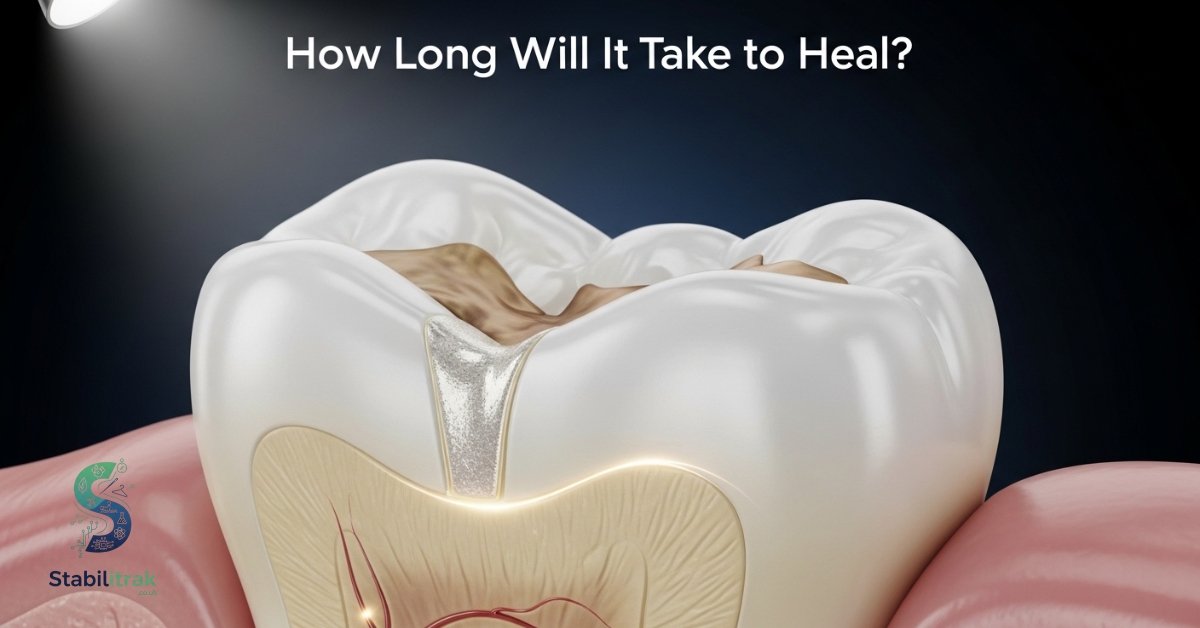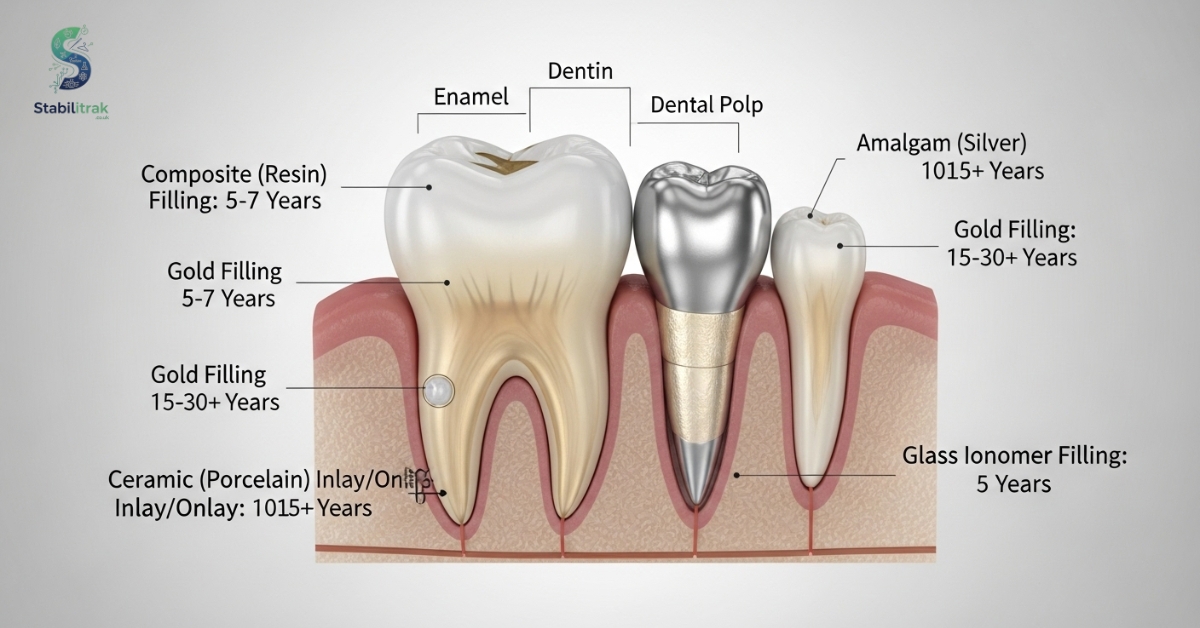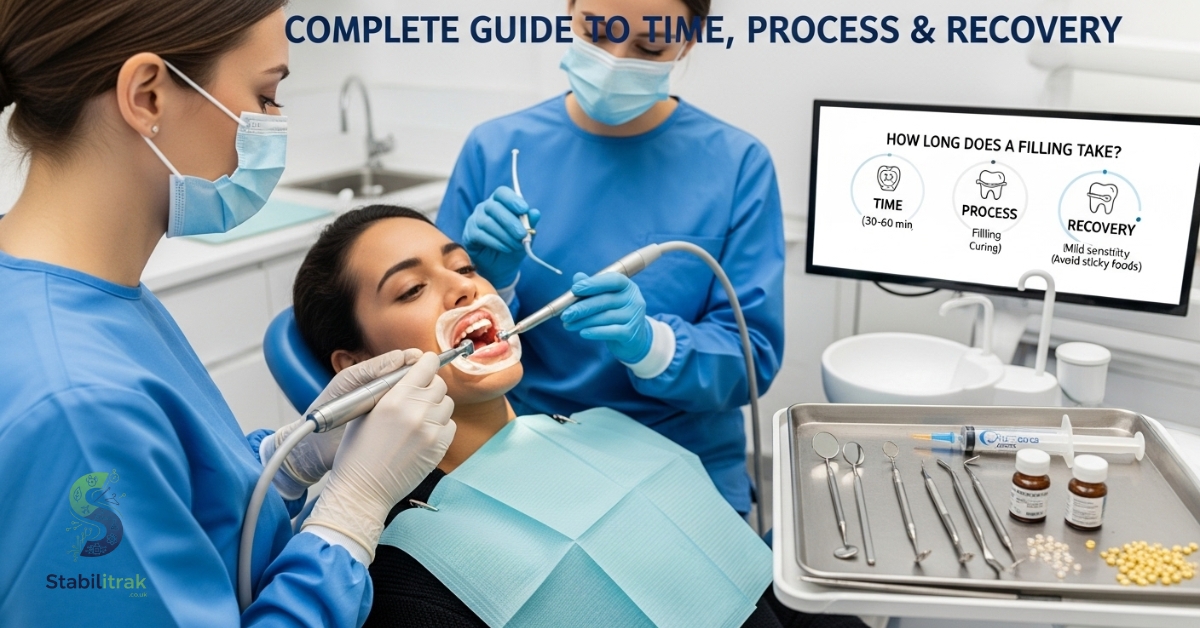Ever sat in the dentist’s chair and wondered, “How long does a filling take?” You’re not alone. Most people worry it’ll drag on forever, especially if they’ve heard stories about long, uncomfortable appointments. The truth is that a little bit of uncertainty can make the whole idea of getting a cavity fixed feel more stressful than it really is.
In this post, we’ll explain exactly how long a filling takes and walk you through what to expect during the procedure. You’ll learn what factors can make the process faster or slower, plus some simple tips to feel more comfortable in the chair. By the end, you’ll have a clear answer and the confidence that getting a filling is usually quicker and easier than you might think.
How Long Does It Take to Fill a Cavity?
If you’ve ever sat in the dentist’s chair wondering, “How long is this going to take?” you’re not alone. For most people, a cavity filling is a straightforward dental procedure that doesn’t take too much time. On average, a single cavity filling takes about 20 to 60 minutes, depending on size, location, and material.
Of course, the timing isn’t the same for everyone. Some patients breeze through in under half an hour, while others may need a full hour or even multiple visits. The type of filling material, whether it’s composite, amalgam, gold, or porcelain, can also influence how long you’ll be at the dental office.
The Filling Procedure: What to Expect
A cavity filling usually starts with numbing the area using a local anesthetic. This is the part where you may feel a quick pinch or stinging sensation from the injection, but after that, your mouth goes numb. The dentist then uses a dental drill, laser, or air abrasion to remove decay and prepare the tooth.
Once the decay is cleared, the dentist shapes the tooth, applies an etching or bonding gel if needed, and places the filling material. Composite fillings may be hardened layer by layer with a curing light, while amalgam or gold fillings require shaping and polishing. In most cases, the entire process feels more routine than dramatic.
After the Filling: What to Expect
After a filling, it’s normal to feel some tooth sensitivity. You might notice discomfort when eating hot or cold foods, drinking soft drinks, or chewing sticky foods. This usually fades within a few days, but desensitizing toothpaste and avoiding extremes in temperature can help.
If your bite feels “off” or you experience sharp pain when chewing, your dentist may need to adjust the filling. Otherwise, recovery is quick, and most people return to daily activities immediately after leaving the office.
Is Prevention Better Than Cure?
Absolutely. While fillings are a reliable fix, the best approach is to prevent cavities from forming in the first place. That means brushing twice daily with fluoride toothpaste, flossing daily, and limiting sugary snacks or acidic foods. Preventive dentistry helps you avoid both discomfort and extra dental bills.
Regular dental checkups also make a big difference. Many cavities can be caught early before they require more invasive treatments like root canals or crowns.
What’s behind your smile?
Behind every smile is a commitment to oral care. Whether it’s daily brushing, flossing, or making time for your dental appointment, small habits create lasting results.
When you take care of your teeth, you’re not just protecting against cavities; you’re investing in a healthy smile that lasts for years.
Read More Article: Perfect Cornhole Board Distance for Every Game
How Long Does a Cavity Filling Take on Average?

On average, a cavity filling takes 20 to 60 minutes. A small, single-surface cavity can often be done in about 20 minutes, while larger cavities or multiple fillings may extend the appointment to an hour.
Children and patients with dental anxiety may take longer, since numbing and keeping still in the chair can add time. In some cases, fillings that require impressions, like certain ceramic or composite types, may need a second appointment.
Factors to Consider
Several factors influence how long a filling procedure lasts. These include the size of the cavity, the number of surfaces affected, and the type of filling material used.
Complications, such as cavities close to the nerve or difficulty numbing, can also add to the treatment time. Each patient’s needs are unique, which is why dentists provide estimates rather than exact minutes.
Size of the Filling
Small cavities typically take less time because there’s less decay to remove and less material required. These are often done within 20 minutes.
Larger cavities may take up to 45 minutes or longer, since more drilling, cleaning, and layering of material are needed.
Number of Surfaces
A cavity on a single tooth surface is simple and quick. However, if the decay spreads across two or more surfaces, the dentist has to use special tools, such as a matrix band, to ensure the filling doesn’t bond incorrectly to neighboring teeth.
This extra step can add 10–15 minutes to the procedure.
Number of Fillings
If you only need one filling, expect 20 to 30 minutes. Two fillings may take 45 minutes, and three or more can stretch the appointment close to an hour or beyond.
Your dentist may recommend breaking up multiple fillings into separate visits, especially if they’re in different areas of your mouth.
Cavity Complications
Sometimes a filling isn’t as simple as removing decay and adding material. If decay reaches close to the nerve, the dentist has to be more cautious to avoid damaging it. In severe cases, a root canal may be needed.
Other delays can come from difficulty numbing, unusual tooth anatomy, or dealing with gum tissue near the affected area.
Setting Timeline
Not all fillings harden the same way. Amalgam fillings usually set in about an hour but require 24 hours to fully harden, meaning you’ll need to avoid hard foods that day.
Composite fillings harden almost instantly under a curing light, though they’re applied in layers that each take 10 to 20 seconds to set. Ceramic fillings set quickly with a special light, while gold and porcelain fillings often require more time or a second visit.
Read More Article: How Ben Stace Uses Semantic SEO to Boost Rankings
How Long Will It Take to Heal?

Most people recover from a filling within 24 to 48 hours. Sensitivity to cold drinks, hot foods, or biting pressure is common but usually temporary.
If discomfort persists for more than a week, your dentist may examine the bite or adjust the filling. Prolonged sensitivity could indicate a complication.
How Long Will Your Filling Last?
The lifespan of a filling depends on the material used and the level of care you provide for your teeth. Amalgam fillings can last 15 to 25 years, gold up to 20 years, composite 7 to 15 years, and glass ionomer about 5 to 7 years.
Brushing, flossing, and limiting sugary or acidic foods all extend the life of your filling. Regular dental checkups allow your dentist to catch signs of wear before problems arise.
Understanding the Cavity Filling Procedure
A cavity filling involves numbing the tooth, removing decay, shaping the area, applying an adhesive or etching gel, and then placing the filling material. Each step ensures the filling bonds well and restores function.
Finally, the dentist polishes and checks the bite for sharp edges. The result is a restored tooth that feels natural and keeps your smile healthy.
Dental Fillings: Types, How Long Do Fillings Take & More
Fillings aren’t one-size-fits-all. The type you get depends on your cavity’s size, location, and budget. Some materials are quick and affordable, while others take more time but last longer.
Here’s what you should know about each option.
What are the different types of tooth fillings?
Dentists use several materials for fillings: composites, glass ionomer, silver amalgam, gold, and porcelain. Each has its pros, cons, and different treatment times.
Choosing the right one depends on durability, appearance, cost, and how long the procedure takes.
White Tooth-Colored Fillings (Composites)
Composite fillings blend naturally with your teeth. They’re placed in layers, each hardened with a curing light.
The process usually takes 30 to 45 minutes per filling, but the natural look and strong bond make them popular.
Glass Ionomer Fillings
These are often used for small cavities or in children’s baby teeth. They release fluoride, which helps protect against future decay.
Placement is quick, often 20 to 30 minutes, but they don’t last as long as composites or amalgam.
Silver-Color Fillings
Also known as amalgam fillings, these are durable and cost-effective. They can take around 20–40 minutes to place.
However, they take 24 hours to fully set, and their metallic appearance makes them less popular for front teeth.
Gold Fillings
Gold fillings are extremely durable, lasting up to 20 years. They often require two visits: one to take an impression and another to place the cast-gold filling.
That means more time overall, but the longevity is hard to beat.
Porcelain Fillings
Porcelain, or ceramic fillings, are strong and stain-resistant. They’re usually made in a dental lab, requiring at least two visits.
The result is a durable, natural-looking restoration that can last more than a decade.
Dental Fillings Recovery
Most people return to normal eating within a day. However, you may want to avoid hard foods, hot drinks, or sugary snacks for the first 24 hours.
Mild sensitivity or sore gums are common but usually fade quickly. Desensitizing toothpaste or over-the-counter pain relief can help.
How Long Do Fillings Last?

Filling lifespan varies by material:
- Composite: 7 to 15 years
- Amalgam: 15 to 25 years
- Gold: up to 20 years
- Porcelain: 10 to 15 years
- Glass ionomer: 5 to 7 years
Your oral hygiene routine and regular dental visits play a big role in longevity.
Conclusion
So, how long does a filling take? In most cases, less than an hour. The exact time depends on cavity size, number of fillings, and the material used.
While the procedure is routine, prevention is always better than treatment. By practicing good oral hygiene, scheduling regular dental checkups, and addressing cavities early, you’ll spend less time in the dental chair and more time enjoying a healthy smile.
FAQs
How much does a filling cost?
The cost of a dental filling usually ranges from $100 to $400 per tooth, depending on the material, cavity size, and your dentist’s location.
How long does it take to fill 3 cavities?
Filling three cavities in one visit usually takes about 45 minutes to an hour. The exact time depends on the size and location of each cavity.
How long does a filling take to heal?
Most fillings heal within 24 to 48 hours. Mild tooth sensitivity is common but should improve quickly with proper aftercare.
How long does it take to fill 2 cavities?
Two cavities can usually be filled in about 30 to 45 minutes. Larger or deeper cavities may take a little longer.
How long does a filling take for a child?
For children, a filling often takes 20 to 40 minutes. The dentist may allow extra time to keep the child comfortable and calm.
How long does a filling take for a small cavity?
A small cavity is usually quick to treat, often completed in 20 minutes or less.
How long does a filling take, Reddit?
Most Reddit users report that a single filling takes about 20 to 60 minutes. Times vary based on material and cavity size.
How long does a filling take after a root canal?
A filling after a root canal may take 30 to 60 minutes. If a crown is needed, it could require a second appointment.


1 thought on “How Long Does a Filling Take? Complete Guide to Time, Process & Recovery”